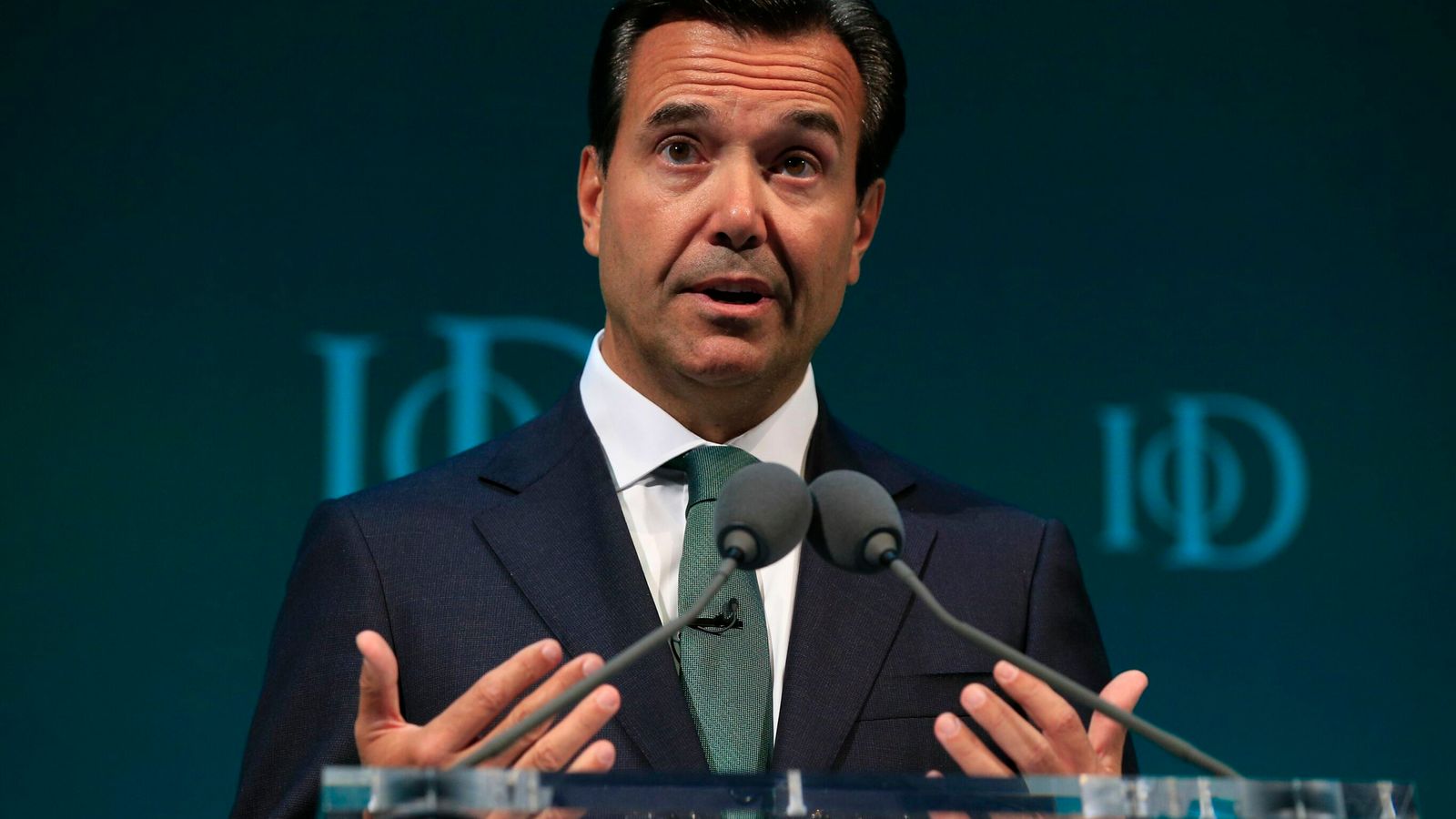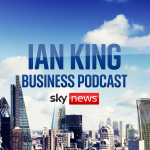As a place to work, the chief executive’s office on the eighth floor of Lloyds Banking Group’s headquarters, at Gresham Street in the City of London, takes some beating.
It is a short stroll from the Bank of England, the Guildhall, St Paul’s Cathedral and, for the artistically-minded, the Barbican Centre.
The views it affords the occupant, meanwhile, are spectacular in more ways than one – not just of the City itself but also of the UK economy.
Lloyds, as the UK’s biggest current account provider, second biggest business lender and owner of the UK’s biggest mortgage lender the Halifax, enjoys a unique perspective of the economy.
The man afforded all these insights for the last decade or so has been Antonio Horta-Osorio, the charismatic chief executive of Lloyds, who steps down this week.
It has been some run.
In an age in which the average FTSE 100 chief executive is doing well to stay in the job for five years, the Portuguese – who also now has British citizenship – has shown remarkable staying power.
Not only is he the longest currently-serving chief executive in UK banking – a mantle that now passes to Bill Winters at Standard Chartered – but he is the longest-serving chief executive of the black horse bank since Sir Brian Pitman.
His two immediate predecessors, Eric Daniels and Peter Ellwood, served seven years and six years respectively, making Mr Horta-Osorio the longest serving Lloyds chief executive since the still-revered Sir Brian, the iconic leader who in his 12 years from 1985 to 1997 made Lloyds one of the world’s most-admired banks.
That staying power could never have been predicted when, in November 2011 and barely eight months into the job, Mr Horta-Osorio was signed off work suffering from stress-induced exhaustion.
The City was shocked and many pundits expected not to see him again.
By January 2012, though, he was back following a period of treatment that, at one point, saw the banker receiving treatment in the exclusive Priory clinic.
He told the Evening Standard at the time: “When I became chief executive in March I had a very clear idea of what had to be done.
“I threw myself into the job.
“There were very many issues to be tackled.
“With the benefit of hindsight, I overdid it.
“I focused too much on too many details.
“At the beginning of September I started to have problems sleeping. I’d go to bed exhausted but could not sleep.
“I could not switch off. I was ending up with just two or three hours sleep every night.
“I understand now why they use sleep deprivation to torture prisoners.”
His illness had come as little surprise to former colleagues at Santander’s UK bank where, as chief executive, he had been both renowned – and feared by some – for his hard-driving approach, his ferocious appetite for work and his relentless attention of detail.
The biggest change colleagues at Lloyds noted on his return to work was a greater willingness to delegate tasks to others.
He also put his experience to effective use by talking openly about his experience in a way no leading City figure had done before.
One of his lasting legacies is that the working culture in the Square Mile is a little less macho than before.
At Lloyds, there are a host of accomplishments on which tennis-playing Mr Horta-Osorio can look back.
On returning to work after his illness, there was still a huge job to do in terms of rebuilding the bank’s capital base, at a time when it was still punitive for banks to fund themselves in the wholesale banking markets.
That was a particular problem for Lloyds because, following the acquisition of HBOS at the height of the financial crisis, the bank found itself saddled with £200bn worth of wholesale funding.
Worse still, nearly half of that had a maturity of less than one year, putting the bank at risk of credit lines being cut.
So rebuilding the lender’s capital position was a huge priority.
It was a slog that involved retrenching in two dozen countries and offloading hundreds of billions of pounds worth of toxic assets – many of them property-related loans – but, within a year of his return to work, Mr Horta-Osorio could point to wholesale funding having been cut by £81.6bn to £169.6bn.
A year later, it was down to £137.6bn and, by the end of 2014, it was down to such a level that Lloyds was able to pay its shareholders a dividend for the first time in six years.
That was a major step towards Lloyds becoming a normal bank again.
The final one, an achievement of which Mr Horta-Osorio remains rightly proud, came when, in May 2017, the UK government finally sold the last of its shares in the bank.
Please use Chrome browser for a more accessible video player
At its peak, following its £20bn rescue of Lloyds and HBOS during the financial crisis, the taxpayer had owned 43% of the bank.
Mr Horta-Osorio told Sky News at the time: “It is a moment of huge pride.
“When I joined the bank in March 2011 the bank was in a very fragile position…it was a bank that had £200bn, a third of the loan book, as toxic assets from the HBOS acquisition.
“And on the other side of the balance sheet, another £200bn of net debt, to finance those toxic assets.
“And half of the net debt was short term money, which was obviously very cheap, but very dangerous – especially considering we were just before the eurozone crisis and the double-dip in the UK economy.”
There were other operational challenges to overcome.
Lloyds was forced, as a condition of its state support during the financial crisis, to carve out 631 of its branches into a separate business.
This was promptly christened TSB – a bank originally bought by Lloyds under Sir Brian in 1995.
Again, it was hard work, but completed in 2013.
And then there were legacy issues.
In May 2011, just two months into the job, Mr Horta-Osorio had taken the momentous decision to stop fighting in court those customers who claimed that they had mis-sold payment protection insurance (PPI).
Other banks followed suit and, at the time, the Financial Conduct Authority estimated customers could receive a total of £4.5bn or so in compensation.
It was a severe under-estimate.
A grotesque claims industry sprouted up to help customers pursue claims in what saw an ugly US-style compensation culture firmly established in the UK for the first time.
By the time regulars set a deadline for those mis-sold PPI to make a claim, the entire industry had paid out more than £38bn, with Lloyds – mainly thanks to the Halifax – paying out £22bn alone.
There was also an unsavoury episode to clear up related to a fraud against small business customers at an HBOS branch in Reading that pre-dated the Lloyds takeover.
The bank was criticised for its handling of the case, in which Mr Horta-Osorio found himself on the receiving end of a campaign orchestrated by the TV presenter Noel Edmonds, who had been a victim of the scandal.
It was not the only unwanted attention Mr Horta-Osorio attracted.
In August 2016, The Sun splashed with allegations that he had enjoyed a tryst in Singapore with Wendy Piatt, a former adviser to Tony Blair and then director of the Russell Group of universities.
He subsequently sent a memo to staff in which he said: “I deeply regret being the cause of so much adverse publicity and the damage that has been done to the group’s reputation.
“It has detracted from the great work which you do for our customers on a daily basis and from the major accomplishments of the past five years.”
Away from these episodes, Mr Horta-Osorio has done much to try to equip Lloyds for the future.
At the end of 2016, he agreed to pay Bank of America £1.9bn for MBNA, its UK credit card business, which made Lloyds the biggest player in a field in which it had previously lacked scale.
As significant was a joint venture set up in 2018 with Schroders to build the bank’s presence in the fast-growing field of wealth management.
These should all stand his successor, Charlie Nunn, in good stead.
If Mr Horta-Osorio – who has earned an estimated total of £60m during the decade – has a regret, it will possibly be that the stock market appears not to have recognised what he has done at the bank.
Even after today’s rise in the share price, which followed news that Lloyds made a pre-tax profit of £1.9bn during the first three months of the year – up from just £74m in the same period in 2020 – the bank’s share price remains only at about three-quarters the level it was when he joined.
That is in no part due to the way COVID-19 crushed the UK economy – as the UK’s biggest domestic lender, Lloyds will have been unusually heavily exposed to this – but it will still rankle.
It is probably not a fair reflection of everything this very proud man has achieved.






















